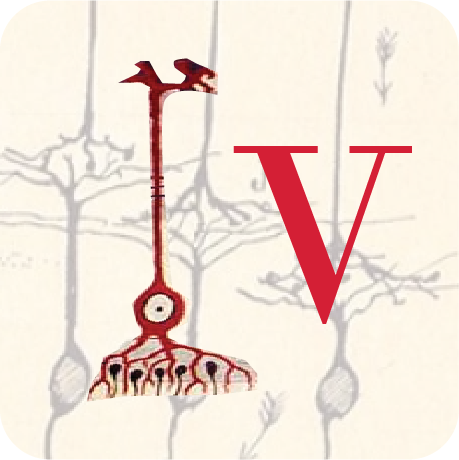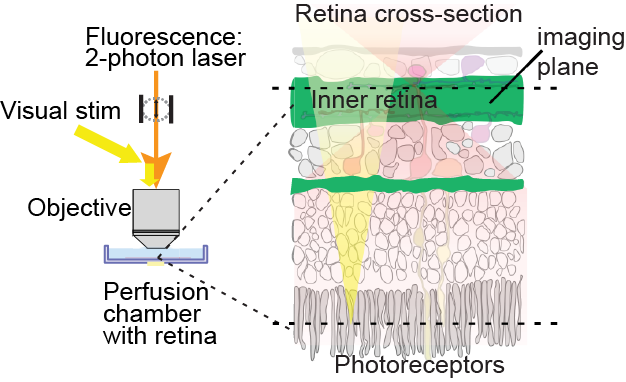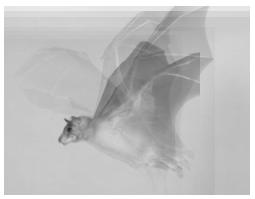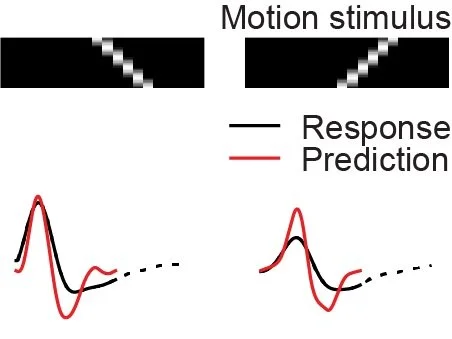
Research
The retina boasts over 100 different types of neurons.
We do not know what most of these neurons do for vision or what happens to their function in disease.
The retina not only contains a wide variety of neuron types, these neurons are also intricately connected to one another in complex neural circuits. The retina performs multiple stages of visual processing through these neural circuits, more like a computer than a camera.
Information Processing in the Retina
A main focus of the lab is understanding how information flows through and is filtered by neural circuits in the retina. We are focusing on motion and color processing, which are important for both how and when we see the world.
A single amacrine cell in the retina that detects motion.
A population of bipolar cells releasing glutamate in response to a visual stimulus.
Vision in Neurodevelopmental Disorders
Another main focus is to understand how vision differs in neurodevelopmental disorders. Genetic mutations and environmental factors can lead to differences in how neurons function and wire together. The lab is exploring how genetic mutations linked to autism affect visual processing in the retina and visual behavior.
Ganglion cells from the retinas of a wildtype mouse and a mouse carrying an autism-linked mutation.
Tracking the behavior of a mouse in different visual environments.
Retinal information for flight in mammals
Our approaches
The lab uses advanced microscopy and electrophysiology techniques to measure how neurons in the retina respond to light.
We use computational methods to understand large datasets and build models of how the retina works.
The lab explores how the retina contributes to vision through genetic manipulations and ecologically-inspired visual behavior.
Banner art by Leonardo da Vinci, Verso Studies of optics, ca. 1490







